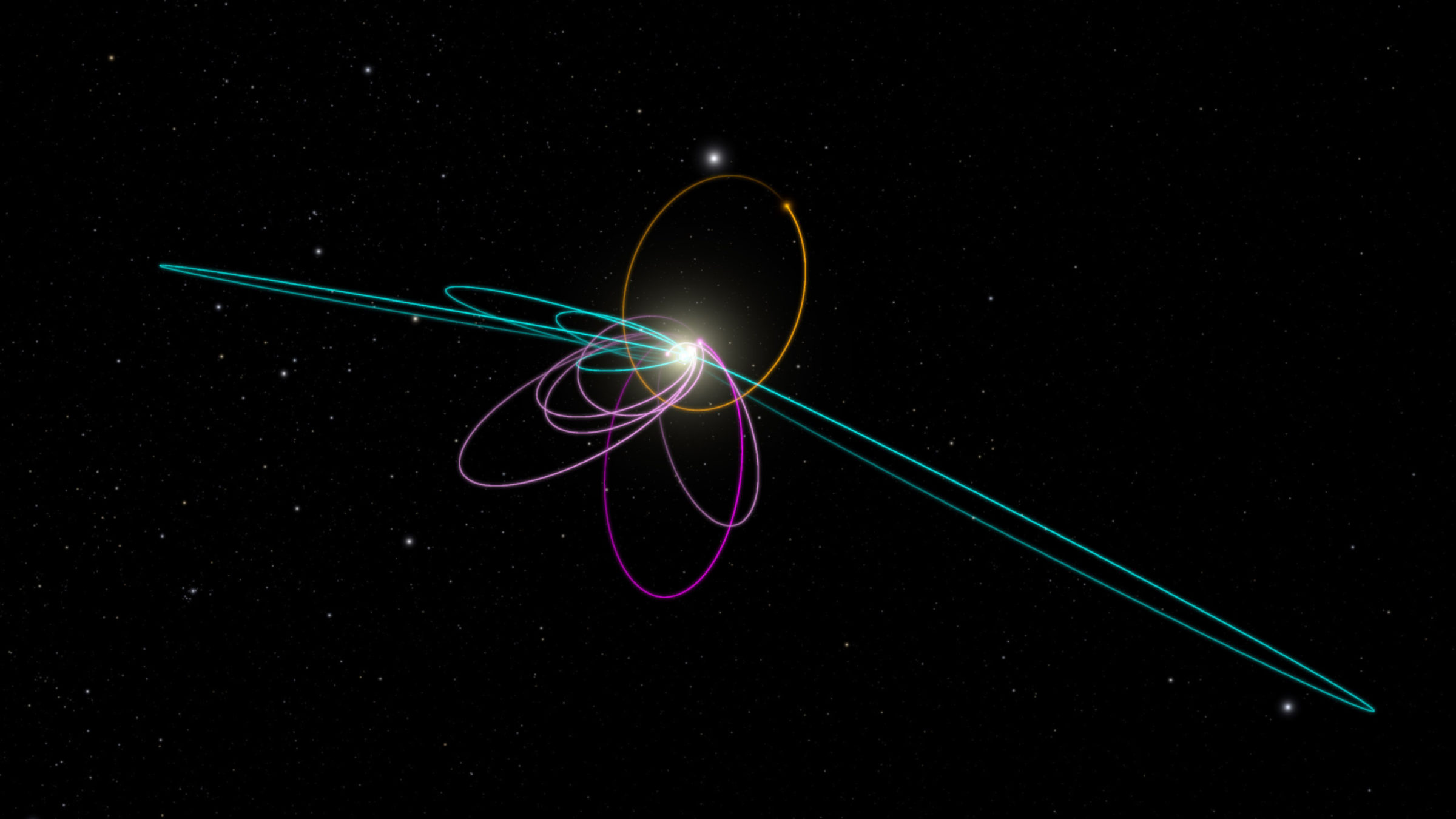Emily Lakdawalla • Jan 20, 2016
Theoretical evidence for an undiscovered super-Earth at the edge of our solar system
We still don't know for sure if it's out there, but it's looking likelier that there is an undiscovered planet orbiting beyond the Kuiper belt. If it's there, it's big, far, and slow. It would be roughly 10 times the mass of Earth (or about half the mass of Neptune), likely never gets closer to the Sun than about 100 200 AU, and takes more than 10,000 years to orbit the Sun. The presence of such a planet would explain two odd clusters of Kuiper belt orbits, including distant detached objects Sedna and 2012 VP113, and the perpendicularly tilted ones of several newly discovered small worlds.
The potential ninth planet is described in a paper written by Konstantin Batygin and Mike Brown that provides a theoretical explanation for how such a distant planet could perturb the Kuiper belt object orbits into their present shapes, sizes, and orientations. You can read a preprint of the Batygin and Brown paper here, and an excellent Caltech press release about the Batygin and Brown work here. The two have also launched a blog, findplanetnine, in which they're chronicling their efforts to search for this undiscovered object. Batygin and Brown explain what they're proposing:
And here's a diagram of the orbits of the things that figure into this work, with "Planet 9" in orange and the orbits of the much smaller worlds that it dominates in magenta and cyan:

A lurking, distant planet is not a new idea, of course, but the last time I reported on this work ("A second Sedna! What does it mean?"), theorists were still scratching their heads over how an undiscovered planet could cause the arguments of perihelion of distant detached objects line up. The best thing about the paper, in my opinion, is that it makes very specific predictions about where the large object should be, and also about where there should be lots of other smaller worlds, providing guidance for future surveys. Brown and Batygin are looking for the object with Subaru, but the search could take five years, and if it's out there, someone else could find it first.
Since the paper was the subject of an embargo, there are lots of excellent articles out there featuring interviews of the authors as well as other observational astronomers, like Chad Trujillo and Scott Sheppard, and dynamics theorists, like Hal Levison and Alessandro Morbidelli. I couldn't possibly do better than all of these, so here's a list of good articles and who they interviewed, in no particular order:
- Alex Witze, Nature: "Evidence grows for giant planet on fringes of Solar System" quotes Batygin, Brown, Alessandro Morbidelli (who reviewed the paper and is "convinced"), Hal Levison (who is skeptical: "I have seen many, many such claims in my career, and all of them have been wrong"), and Meg Schwamb (on the difficulty of actually observing the putative world).
- Nadia Drake, National Geographic: "Scientists Find Evidence for Ninth Planet in Solar System" quotes Batygin, Greg Laughlin ("I think this is it"), Morbidelli, Levison (who seems to have sent Drake the same email he sent Witze), and Chad Trujillo (who "plans to begin searching along the predicted orbit next month").
- Eric Hand, Science: "Astronomers say a Neptune-sized planet lurks beyond Pluto" quotes Batygin, Brown, Laughlin, Levison, Dave Jewitt (who has reservations), and mentions Kevin Luhman's work on WISE (whose observations have eliminated the possibility of Saturn-sized or larger distant planets; the Batygin and Brown one is smaller than that).
- Kenneth Chang, The New York Times: "Ninth Planet May Exist Beyond Pluto, Scientists Report" quotes Batygin, Brown, Trujillo ("We’re pleasantly surprised that someone has really done a much better job than we did"), and Morbidelli ("I would bet money. I would bet 10,000 bucks.")
- Michael Lemonick, Scientific American: "Strong Evidence Suggests a Super Earth Lies beyond Pluto" quotes Batygin, Brown, Trujillo, Scott Sheppard, Laughlin, and Levison (another instance of the same email, evidently).
- Joel Achenbach and Rachel Feltman, The Washington Post: "New evidence suggests a ninth planet lurking at the edge of the solar system" and "Q&A: The ‘Pluto Killer’ who thinks he’s found the true ninth planet" quotes Brown, Morbidelli, and Sheppard ("With this new work, it’s much more rigorous, and people will take it more seriously now").
I did read the paper, and one thing in the discussion caught my eye: the work does not explain the "Kuiper cliff," the lack of objects with orbit semimajor axes between 50 and 70 AU. It would be very nice (from an aesthetic standpoint, anyway) if the same planet could also be blamed for those apparently missing worlds. But it can't, at least not yet:
Another curious feature of the distant scattered disk is the lack of objects with perihelion distance in the range q = 50–70 AU. It is yet unclear if this property of the observational sample can be accounted for by invoking a distant eccentric perturber such as the one discussed herein. Indeed, answering these questions comprises an important avenue toward further characterization of our model.
Future work, as always, is needed.
Support our core enterprises
Your support powers our mission to explore worlds, find life, and defend Earth. You make all the difference when you make a gift. Give today!
Donate

 Explore Worlds
Explore Worlds Find Life
Find Life Defend Earth
Defend Earth

